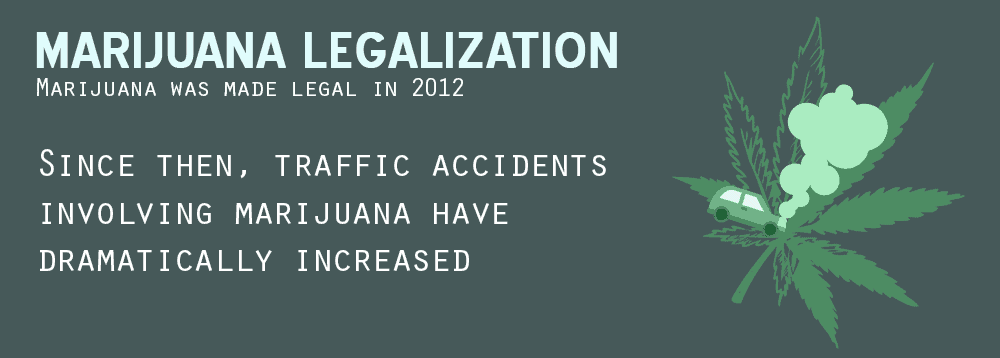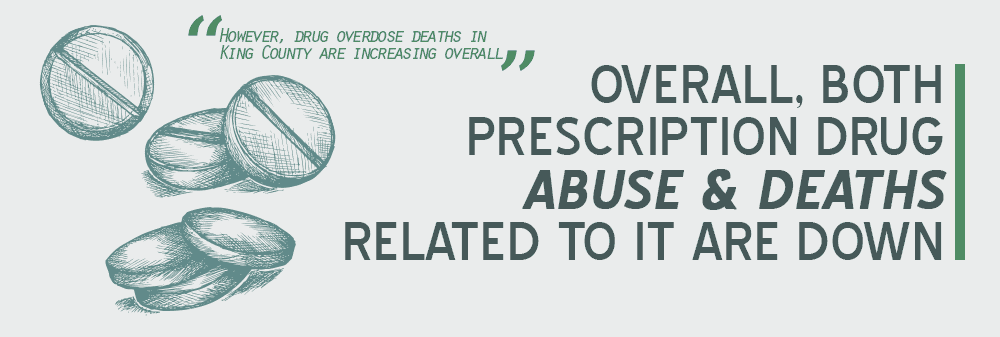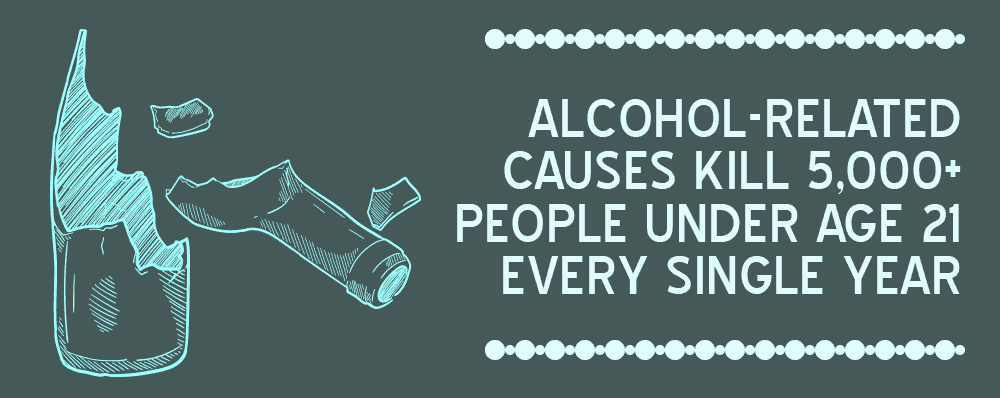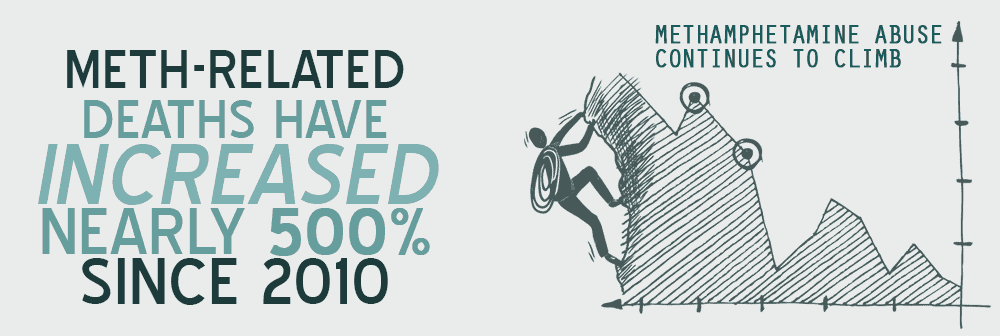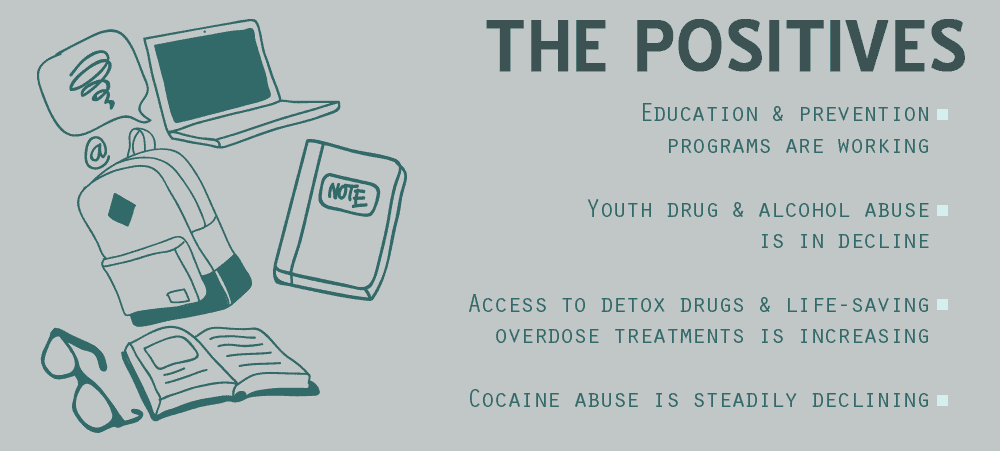We’re always looking at the latest drug addiction statistics so that we have a good idea of what’s going on in Bellevue and we can be prepared for the latest drug abuse trends. The reason we do what we do at Northpoint Seattle is because drug addiction and abuse is a serious problem in Bellevue, Washington. And we’re trying to stem the tide and start fighting back against this wave of addiction. We say all the time that drug addiction isn’t limited to any particular area, any particular social group, ethnic group, class, age, and anything else. Nobody is safe from this awful disease. Addiction can hit anyone at any time. But even though addiction itself exists everywhere you look, that doesn’t mean it’s the same everywhere. Addiction and drug abuse take on some different features in different areas of the world. Depending on where you look, the popular drug of choice may change, or the demographics of those suffering from addiction may be different. Some places take addiction more seriously and are more likely to get treatment, while others go largely untreated and suffer for it. So the question is, how do Bellevue, the greater King County area, and Washington state in general stack up statistically in terms of drug abuse and addiction?  The short answer is that it’s not good. Downtown Bellevue sees more than 48.5 overdose deaths per 100,000 people, a rate that is nearly four times the national average. Addiction isn’t good anywhere, but there are some addiction issues that stand out more than usual in Bellevue. On the other hand, there are some drugs that are at particular lows in recent years. Let’s go through and see what the current trends are for Bellevue in drug abuse and addiction, one substance at a time.
The short answer is that it’s not good. Downtown Bellevue sees more than 48.5 overdose deaths per 100,000 people, a rate that is nearly four times the national average. Addiction isn’t good anywhere, but there are some addiction issues that stand out more than usual in Bellevue. On the other hand, there are some drugs that are at particular lows in recent years. Let’s go through and see what the current trends are for Bellevue in drug abuse and addiction, one substance at a time.
Marijuana Legalization Statistics in Bellevue and Washington State
Marijuana has been a hot topic in Washington State for the last few years. The eyes of the nation have been watching the states of Washington and Colorado as test cases, ever since they voted to legalize recreational marijuana in 2012. Oddly enough, results of marijuana legalization have been something of a mixed bag. Marijuana usage is up in these states in general, though not significantly more than fluctuations in past years. However, an interesting trend is how legalization of marijuana has affected marijuana usage in teens. In short, it hasn’t. Numerous reports show that the rate of pot usage in teenagers remains unchanged since it became legally obtainable. In fact, in a twist few have been able to explain, teens today report that pot is actually more difficult to obtain than ever before. A study in Colorado shows similar results – legal marketplaces for adults to purchase recreational marijuana has had no effect on marijuana use in teens. This is particularly significant since multiple studies have shown that people are more likely to develop a dependency or addiction to marijuana when they start using as adolescents. Still, nearly half of treatment admissions for marijuana use in Washington are for people under the age of 18. Traffic fatalities are similarly unaffected by pot legalization efforts, with deadly traffic accidents remaining stable in recent years, and lower than they were a decade ago. However, while the number overall traffic fatalities have remained stable, the percentage of those accidents involving marijuana has jumped up significantly. Marijuana legalization advocates are taking these statistics as a huge win for their efforts, and a sign that fears about the consequences of legalization are overblown. But whether the drug is legal or not is really irrelevant in this case. Alcohol is legal, and that’s still an addictive substance that ruins lives when abused. Whether or not something is legally obtainable has no bearing on whether or not it’s an addictive substance that causes problems for people. All the legalization in the world isn’t going to change the fact that marijuana is addictive. About nine percent of people who use marijuana eventually become addicted. Assuming that percentage stays consistent, then an increase in marijuana use means a corresponding increase in marijuana addiction. And an increase in marijuana addiction means an increase in people who can no longer live a free, unencumbered life. It’s an increase in people who steer themselves into personal and financial ruin because addiction is gripping them and guiding all their decisions out of their control. And as marijuana abuse and addiction trends upwards, so too does the need to treat those who fall victim to it. That means getting addiction treatment, yes, but also generalized medical help. Washington State has seen a spike in marijuana-related hospital visits since legalization. It’s unclear whether this is due to an increase in dangerous pot-related situations, or if it’s because people are more likely to go to the hospital without fearing legal repercussions in an emergency.
Prescription Pain Medication Abuse Declining, But Still High
The data on prescription drug abuse in Bellevue seems positive, but it’s a bit complicated. Overall, both prescription drug abuse and deaths related to prescription drug abuse are down, and have seen steady declines over the past several years. It is widely assumed that the abuse of prescription opioids has declined because access to those substances has declined. On the surface, that seems like a good thing, but don’t be so sure. Actually, drug overdose deaths in King County are increasing overall. It just so happens that less of them have to do with prescription drugs for chronic pain like Oxycontin, Vicodin, and Demerol. In fact, King County’s prescription opioid-related deaths are at their lowest point in a decade. Yet the opioid epidemic continues to tear through the region as bad as it ever has. The reason for this is the same reason quitting “cold turkey” rarely works. Addiction isn’t a problem you can solve by simply removing the substance in question. People who are addicted to prescription opioids are having a hard time feeding their addictions because the substance they’re using is hard to find. But that doesn’t make them any less addicted to those substances. These people aren’t getting treatment for their ailments, they’re simply being forced into desperation. That is leading many of these people to look for alternatives.
The Latest Stats on Bellevue’s Heroin Problem
The Seattle-King County area has been known for an increased rate of heroin use for years, and unfortunately the data on addiction shows that this is more than just an unfair stereotype. In fact, the heroin epidemic is trending towards all-time highs. In 2014, King County had more heroin related deaths than at any time in the last 20 years. State wide, drug treatment admissions for heroin went up almost 300% between 2002 and 2012. In fact, about one in five admissions for drug treatment in Washington are for heroin. Mind you, that’s not talking about opioids in general, which would include both heroin and opium-based prescription painkillers. That’s one-in-five admissions for heroin alone. For reference, that’s about the same percentage of people as those who enroll in drug treatment for only alcohol addiction. There are a number of potential explanations for this sharp increase in the past decade. Some experts blame the prescription pain medication abuse epidemic. What do those have to do with each other, you ask? Similar active ingredients, for a start. As we’ve discussed already, the rate of prescription pain medication abuse in Washington State is declining, though it is still unacceptably high. One of the main reasons for this decline is that prescription opioid medication on the street is extremely difficult to obtain, and often prohibitively expensive. A single pill can cost $40-$100 on the street, and supplies aren’t stable. As a result, many people who have developed a dependency on these drugs are simply unable to secure a supply to feed that habit. You might be tempted to think this is a good thing – that an addict having their drug supply dry up is a good way for them to force themselves to clean up. You would think wrong. Addiction doesn’t just give up. It doesn’t allow its victims to just throw up their hands and say “oh well, I guess there’s no more.” Desperation kicks in. The decision-making process is further skewed towards satisfying cravings. People turn to alternatives they wouldn’t normally. In this case, people who developed a dependency on prescription opioids turned to a much cheaper, and more readily-available alternative – heroin. Heroin, while certainly not as safe to consume or as well-regulated as prescription drugs like Oxycontin, provides many of the same “highs.” That means that people who end up getting hooked on prescription drugs – often through no fault of their own, simply because they’re taking what was legally prescribed to them – will frequently fall into heroin as a “next-best-thing” alternative after their prescription dries up. Recent nationwide studies have shown that nearly half of young people who regularly use heroin had abused prescription opioids before switching over to heroin as a “cheaper” and “easier to obtain” alternative.
Alcohol – The Statistical Leader of Addiction in Bellevue, WA
Talking about drugs and addiction in Bellevue leads you in certain directions. We tend to talk about marijuana because of the notable legalization of marijuana in Washington state. We also lean towards talking about prescription drugs and heroin, because these have proven to be such major problems in the area, and both addiction and overdose deaths are trending up in recent years. What doesn’t get discussed nearly enough when talking about addiction is alcohol. In King County, in Washington State, in the United States, and indeed in almost every single country on earth, no substance causes more damage and is the cause for more addiction than alcohol. Just because alcohol use is legal and regulated, that doesn’t mean that it isn’t a problem. All that means is that it’s a problem that is more likely to hide in plain sight. Why, you ask? Think of your best friend or most beloved family member. For argument’s sake, make it someone over the age of 21. Now, picture that person drinking a few beers or a bottle of wine. You don’t see any problem with that, right? Now, picture that same person using heroin or abusing prescription pills. Alarm bells probably go off immediately. See, when it comes to most illicit drugs, any usage at all is considered a problem immediately. Alcohol is a different beast. It’s still liable to cause addiction, tear families apart, and lead to financial ruin. But most alcohol use is considered “normal,” so the distinction between “use” and “abuse” falls in a gray area that is much more difficult to see through. The warning signs of alcoholism aren’t as clear. Yet alcohol is one of the most prevalent addiction problems we face as a society, and it often doesn’t come alone. About 54% of people enrolled in substance abuse programs in Washington state are enrolled for both alcohol and drug use. That’s in addition to about 20% of those who are enrolled for alcohol abuse alone. So for those keeping score, that’s almost three out of every four people in addiction treatment for something alcohol-related. And that’s only for people who are actually in treatment. Far more damaging is the people who are not. It is estimated that more than 90% of people in Washington state who have an alcohol or drug dependency are not receiving treatment. Meanwhile, drunk driving contributes to over a third of traffic fatalities in WA, and alcohol-related causes kill more than 5,000 Washington residents under age 21 every single year. That’s not just from drunk driving accidents or alcohol poisoning, but also murders, suicides and accidents stemming from alcohol use. Speaking of young people, about 23% of high school seniors report not only that they are engaged in underage drinking, but that their alcohol use is “heavy” or a “problem.” Still, it’s not all bad news. Underage binge drinking – one of the biggest predictors of alcoholism – is down to only 5%, from a high of 18.9% in 2010. While there have certainly been some positive steps forward, it’s hard to deny that Bellevue’s biggest drug problem is still alcohol, despite spikes in other areas.
Methamphetamine Abuse Continues to Climb
Though it hasn’t been as much of a headline-grabber, methamphetamine has seen a steady increase in usage in Bellevue, and is now one of the most common illicit drugs in the area. Meth is now second only to heroin on the list of most commonly-abused illicit drugs in the state of Washington (now that marijuana is no longer “illicit”). In the King County area alone, meth-related deaths have increased nearly 500% since 2010. Meth is the most commonly-used drug in conjunction with heroin, is the most common drug in police testing, and is the second-most mentioned drug in emergency calls. There has been an uptick of meth abuse in Washington in recent years, and one suspected explanation is that it is a response to marijuana legalization. Most of the methamphetamine that comes to Washington state is of a very high quality and comes from Mexico. Mexican cartels have taken a huge hit to their profits, because the legalization of marijuana has dried up the illicit marijuana market. At least partially in response, they have ramped up production of meth to make up for some of those lost profits. All this translates to a very simple fact: Meth is a dangerous drug that should not be ignored. Just because it isn’t increasing its profile as quickly as heroin doesn’t mean it isn’t just as efficient at ruining lives.
The Positive Trends about Drug Abuse in Bellevue
So far, it’s been a lot of doom and gloom about the drug epidemic hitting Bellevue, King County, and Washington state in general. And it’s true that WA has a lot of work to do, but that is work that is actually getting done. Here are some of the good things happening in Bellevue, WA:
- education and prevention programs are showing dividends
- youth drug and alcohol abuse is in decline
- access to detox drugs and life-saving overdose treatments is increasing
- cocaine abuse is in a steady decline
Now, not only is the detox process getting safer and easier (especially for those suffering from opioid-related addictions), but we are more capable than ever of saving those who are in the greatest need of help before it’s too late. And that leads us to the biggest piece of good news. It’s nothing new, but no matter how bad the drug epidemic gets, there will always be a way to fight back. It’s a constant battle, but we understand addiction better now than ever before. We know that beating a drug addiction isn’t easy, but it’s always, always possible. And in response to this rising wave of drug abuse and addiction, there has been a corresponding increase in treatment centers and professionals geared to help people overcome the challenges of recovery. There are countless addiction treatment centers and other addiction resources in Bellevue geared directly at helping people overcome any of these problems. That means you and your loved ones, too. If you think you or someone close to you may have an addiction problem, even if it isn’t related to the substances we’ve discussed above, you can always contact us to know what your next steps are.
What Did you Think About This Blog?
Give it a Rating!

